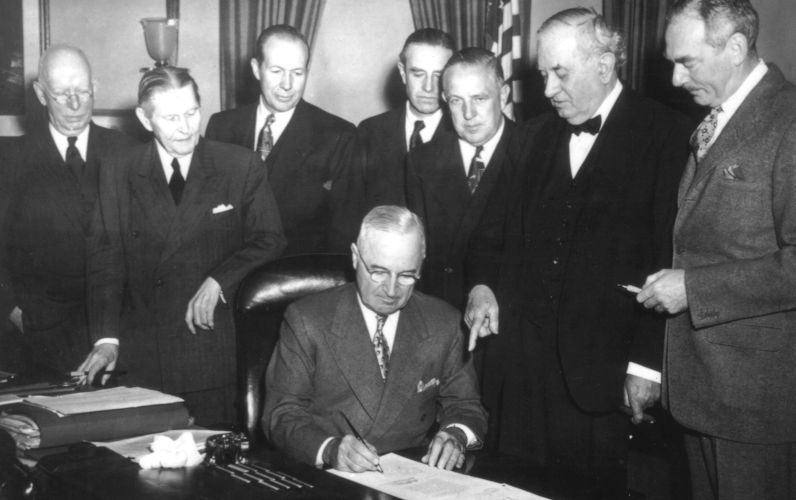In memory of the Marshall Plan – a primer for Gen Z
May 12, 2025
The attack on Pearl Harbour led to an enormous volume of United States resources being committed to the war against Nazi Germany.
This commitment, and the equivalent post-war arrangements put in place, had economic and geopolitical consequences that lasted for 80 years. They were driven by three complementary motives: an unprecedented level of generosity; to foster economic stability in Europe and thus to prevent or slow the spread of communism, initially in response to the growing Soviet influence in Eastern and Central Europe; and in support of the United States’ economic self-interest.
The main vehicles for the transfer of resources from America to Europe back then were the Lend-Lease Act and the Marshall Plan.
The Lend-Lease Act was signed into law in March 1941 and ended in September 1945. Under it, military and economic aid was provided to Britain and the Soviet Union in the war against the Axis powers, without the US directly entering the war. It cemented the US’ role as “the arsenal of democracy”. The sheer size of its resource base and economy was the decisive asset of the war.
The Marshall Plan, developed by US Secretary of State George Marshall, was operational from April 1948 to December 1951. It provided loans and grants to Western European countries to help them rebuild their infrastructure, industry and economy.
By 1945, many German cities, including Dresden, were razed to the ground. Basic supplies like food, drinking water and medical aid could not be guaranteed. Millions of people were homeless. The European winter of 1947 was particularly harsh, compounding human need and misery.
Assistance under the Plan was initially offered to all European countries, including the Soviet Union. But it was effectively limited to Western Europe due to Soviet pressure on its satellite states not to join. These were Albania, Bulgaria, Czechoslovakia, Finland, Hungary, Poland, Romania and Yugoslavia.
This solidified the division of Europe into two blocs: a Western bloc receiving US aid and an Eastern bloc under Soviet influence. This division contributed to the formation of NATO, a military alliance designed to counter Soviet power.
Broadly speaking the economic arrangements set in place through the Marshall Plan persisted for 80 years. They were altered almost imperceptibly by a number of headline developments. The economies of China and Southeast Asia matured, leading to the global reorganisation and relocation of manufacturing. Europe tried to throw off, like a butterfly too long in a chrysalis, its fundamental bi-modal political structure inherited when the Russian army won the race to Berlin.
Technological change immutably revolutionised production and service sectors, and evened out transport and communication capacities worldwide. And newly-established international agencies had only limited success in co-opting nations to agreed, rules-based and accountable standards of lawful and ethical governance.
The effects of these underpinning trends varied from country to country, in part due to their status or starting condition in 1945. Thanks in large part to the Marshall Plan and the expectations it signalled, the US began the period as the world’s banker and policeman.
In 1947, US president Harry Truman launched the Truman Doctrine that stated that the US would protect free peoples from subjugation by armed minorities or communist forces. Subsequently, this saw US military involvement in Korea, Vietnam, Latin America, Grenada, Panama, Iraq and Afghanistan. Each of these may be seen as action in defence of freedom, and/or for the protection of the American people, and/or for the liberation of people in some other place who were at the mercy of political regimes bent on depriving some of their citizens of freedom.
The Marshall Plan showed that international strategic co-operation, especially development cooperation, can lay the basis for economic and social prosperity.
In 1945, more than half of the world’s industrial production and one-third of the world’s production of goods of all kinds came from the US. The US was the largest exporter and a few years later, thanks in part to the Marshall Plan, it accounted for a third of world exports. American shipping companies owned half the world’s commercial fleet.
In retrospect, it seems particularly significant that under the Marshall Plan there was also “indirect aid” provided to its participants through the dismantling of trade barriers and through new arrangements to underpin free trade.
The Marshall Plan succeeded on three fronts through a rational and generous exercise of the power inherent in the world trade system. However, it was not sufficient to prevent decay from inside-out of the political entity which pulled the levers.
